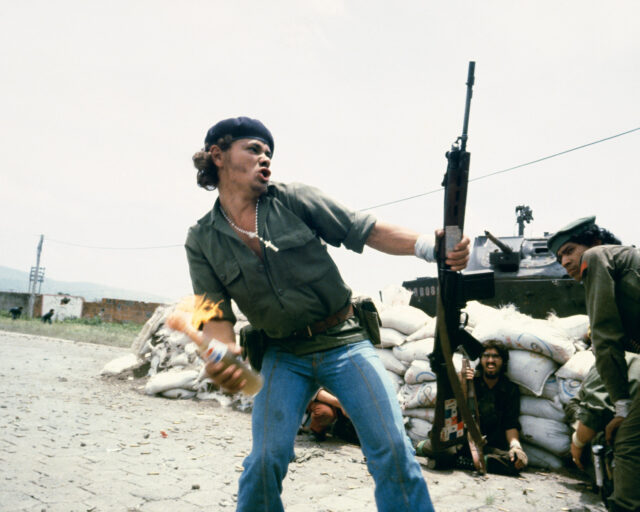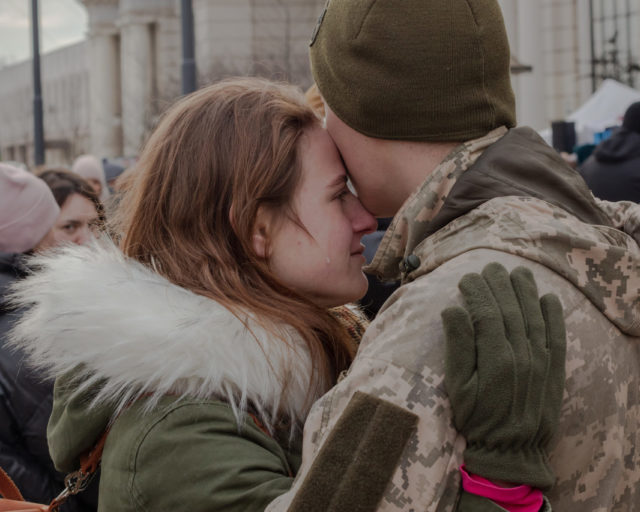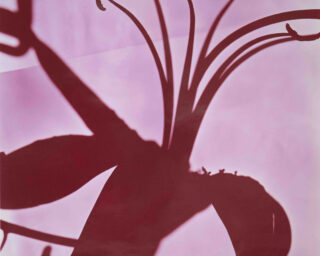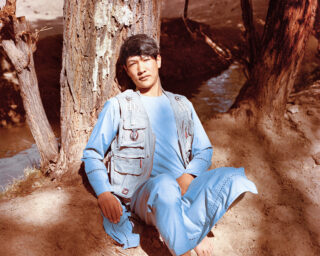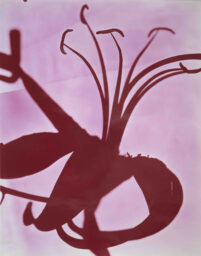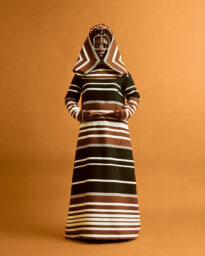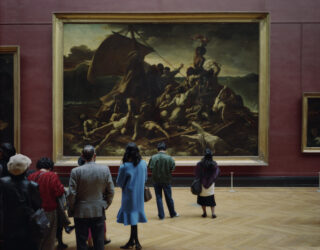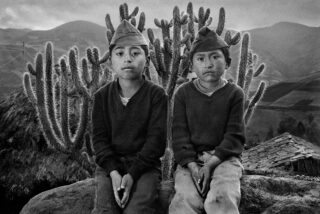Embedded Images
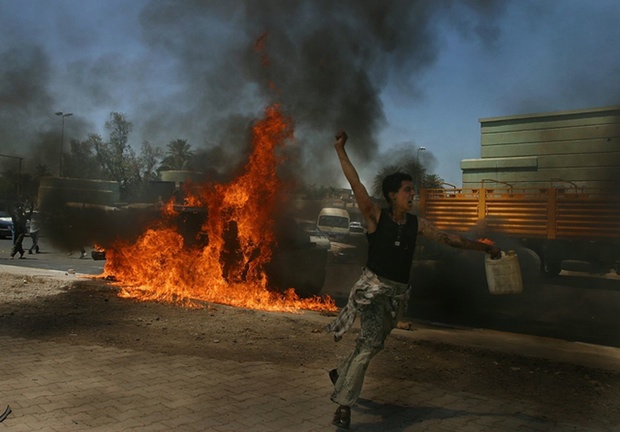
Ghaith Abdul-Ahad, An Iraqi boy celebrates after setting fire to a damaged US vehicle that was attacked earlier by insurgents, Baghdad, April 4, 2004. © Ghaith Abdul-Ahad
Julian Stallabrass describes his anthology Memory of Fire: Images of War and the War of Images as comprised of “pairs of loosely associated essays and interviews.” Stallabrass is an unusually thoughtful photography critic, but this is an overly generous description. Reading this anthology—many of whose pieces date from 2008, and some of which were previously published—is like trolling through a flea market looking for gems. The book mounts no sustained argument, or arguments; instead, it covers—in a fairly haphazard fashion—such issues as the role of embedded photographers; the use of torture in the wars in Afghanistan and, especially, Iraq; and the ways in which technological changes are affecting the reception of photojournalism and the work of photojournalists. Still, I like flea markets, and there is enough of value in this volume to make it worthwhile to anyone interested in the contemporary challenges of war photojournalism.
The best parts of this book are its surprises. Rita Leistner, a co-author of the 2005 volume Unembedded, mounts a surprising defense of the much-maligned practice of embedding, which she has practiced; she also notes, though, that she always felt “queasy and a little dirty” watching checkpoint interrogations of Iraqi civilians by American troops. Ashley Gilbertson, who for years has taken extremely powerful images from Iraq and Afghanistan for the New York Times, bluntly defends the practice—and the importance—of showing these wars from all sides, including that of American soldiers. Embedding, he explains, is not “anything different from what we normally do. The reason to embed is . . . for the access, for that intimacy, to see what they see and to feel what they feel.” Another surprise is Welsh photojournalist Philip Jones Griffiths—author of the canonical, 1971 anti-war book Vietnam Inc.—revealing that he “distrusted” the anti-war movement. As for the Vietnamese, he observes: “I was struck throughout the 1980s by the way the Vietnamese cared for one another and were kind to each other in a way that I never saw during the war years.” So much for the nobility of war.
The inadequacy of photography to portray the anguish of war is a theme that runs, if somewhat haphazardly, throughout this book. Stallabrass opens the volume by discussing “the apparent failure of photojournalism to describe the new circumstances of war and occupation,” and sets an exigent moral tone by noting how “easy [it is] to forget that bloody subterranean murmur”—the continuing carnage in Iraq and Afghanistan—“which should stain our whole experience.” Geert van Kesteren—who turned to Iraqis’ cell-phone pictures as a way of presenting and understanding the war from their perspective—rues the gap between photograph and experience, especially in his own work: “the stories that people were telling me were so extreme and the pictures I could take so mundane.” Similarly, Adam Broomberg and Oliver Chanarin remark that the images they took of wounded British soldiers “failed and would always fail to represent any of the trauma.” But the helplessness that is sometimes expressed is, I think, exaggerated. The critic Sarah James complains that “the technological nature of today’s warfare has resulted in a war that is nearly impossible to document as it happens” and wonders if “the terror of death can no longer be photographed.” Yet she never makes clear why, when it comes to the wars discussed here, the sorrow is deeper and the meaning more occluded; photojournalists—at least thoughtful ones—have struggled with the gap between suffering and image almost since the medium’s inception. In fact, some of the photographs in this book—and elsewhere—refute James’s claims, which she states but does not substantiate. And why does she describe “today’s globalized, technological warfare” as “unfathomable”?
When it comes to technology, Memory of Fire throws a nice cold splash of water on the illusions of the techno-utopians. Trevor Paglen, who has photographed hidden military installations, warns against “equating Google Earth and Google image search with political transparency.” He’s refreshingly humble, too; his work, he explains, is an attempt to answer the question: “How do I . . . engage with . . . something that I don’t quite understand? The answer often has to do with trying to represent . . . that moment of incomprehension.” Gilbertson notes that the 24/7 news cycle created by digital cameras, laptops, satellites phones, etc. has become a nightmare for photojournalists: “I was told by mast-head editors at The Times. . . . ‘We’ll now judge you by what you put on the website and the blog’—which is crap.” The demand for immediacy has resulted in more—but, often, less thoughtful—images.
Memory of Fire addresses “images of war and the war of images” almost entirely in relation to the U.S. invasions of Afghanistan and Iraq: the wars sometimes (though I think too lazily) described as “imperialist.” Stallabrass is not interested, for example, in the carnage in Pakistan, where the Taliban continues to murder secularists, women, girls, Shias, and assorted other civilians; or with the long-running conflict in the Congo (dubbed “the world’s worst war” by the New York Times last year), where an estimated five million people have died from war-related causes and hundreds of thousands of women and girls have been raped; or with mass murder in Darfur and other parts of Sudan. The choice to focus on Afghanistan and Iraq is defensible: one can argue that, politically, these are the stories of our time. But even within this relatively narrow prism, the political analysis put forth—if implicitly—by Memory of Fire is inadequate. Comparisons are sometimes attempted between these recent wars to the one in Vietnam. But the history and politics of that country have virtually nothing in common with either Afghanistan or Iraq; and so when, in a group interview, van Kesteren asks Griffiths about the similarities, he is basically swatted away. “There are more parallels, paradoxically, with the Algerian war where the FLN discovered very quickly that there was no way to beat the French army but they could create a civil war with huge numbers of deaths so that people related all their problems to the invaders,” Griffiths explains—a devastating analysis whose implications for Iraq are ignored. Stallabrass quickly raises another topic.
Similarly, the murder of journalists and photojournalists by the Iraqi “resistance”—something the Vietnamese certainly did not practice—isn’t fully understood by Stallabrass. “We’re targets, we’re infidels,” Gilbertson explains to him. “We’ve got communiqués from [Abu Musab] al-Zarqawi [leader of Al Queda in Iraq] himself that say, ‘We’re going after the Western press.’ . . . They don’t want to reach out to us. In the case of Al-Qaeda, they just want us finished.” But Memory of Fire never places these attacks within the larger context in which they have occurred. The murder of journalists and photojournalists—one of the distinguishing characteristics of the wars in Iraq and Afghanistan—can’t be separated from the murder of United Nations workers, humanitarian aid providers, schoolgirls, secularists, doctors, lawyers, teachers, intellectuals, feminists, Christians, Kurds, and anyone, including fellow Muslims, belonging to an “infidel” group. The Iraqi “resistance” recognized the humanity of no one other than itself; though Stallabrass briefly mentions this at one point, his book heavily emphasizes American-caused violence. (Leistner’s chapter is called “Embedded with Murderers.”) This violence surely needs to be documented, analyzed, and morally reckoned with. Yet Stallabrass’s emphasis places him, in 2013, in an awkward position; he never answers, or even broaches, the obvious question: Why has the Iraqi “resistance”—which Stallabrass describes as “a natural reaction to the savagery of the invasion and the occupation”—continued to murder fellow Iraqis, in appalling numbers, even after the U.S. withdrawal? Who or what is it resisting? Nor does describing sectarianism as a colonialist trope seem to adequately describe what is happening in Iraq, Afghanistan, Pakistan—or, now, Syria.

Wissam Al-Okaili, Iraqi youth gather around a pool of blood left behind following a bomb blast in the Shiite neighborhood of Sadr City, Baghdad, October 30, 2006. © Wissam-Al-Okaili
What of the images in Memory of Fire? Though most if not all have been published before, they remain startling, horrifying, and moving—and refute the commonly voiced claim that repeated viewing hardens us to the pain of others. There is Griffiths’s frightening black-and-white photograph, taken in 1967 and reproduced from Vietnam Inc., of a group of Vietcong suspects—roped together at their necks, like animals or slaves—being led through a windswept field by two American soldiers to probable torture or death; and a much quieter photograph from 1981 of a Vietnamese woman, her face grotesquely scarred from napalm, beside the beautiful, smooth-skinned girl she adopted. We see Simon Norfolk’s 2003 photograph of Shalal Moussa Al-Zubeidi’s remains, which amount to a sad little heap of bones. (Al-Zubeidi was executed in Abu Ghraib by Sadddam’s regime in 1993; after Saddam’s overthrow, his family dug him up so they could move him to a proper grave.) There are Coco Fusco’s disarmingly simple, cartoon-like color drawings depicting the creepily intimate relationship between sexuality and torture, including one of a blonde, female interrogator—dressed in fatigues and a black bra—smearing menstrual blood on the face of a kneeling, handcuffed Iraqi prisoner in an orange jumpsuit. There is Gilbertson’s 2004 photo, taken from the vantage point of an American soldier, showing his huge gun pointed at a small Iraqi boy holding a white flag (actually, a little scrap of drooping cloth) and the older, frightened man next him: a succinct exposition of American power and Iraqi vulnerability. There is van Kesteren’s happier image, circa 2005–2007, of a Muslim Iraqi family celebrating Christmas in Baghdad: smiling forthrightly at the camera, they wear red-and-white Santa Claus hats. Despite the potential danger, the family insisted that “it would be a total insult if you did not show our faces.” (This image originally appeared in van Kesteren’s 2008 book called Baghdad Calling, a riveting document that depicts—and discusses—the violence in Iraq with greater complexity than Memory of Fire.)
And Stallabrass shows us, more than once, the torture photographs from Abu Ghraib; indeed, he opens the volume with one of these. It is several years since I have seen these pictures, but they have lost none of their power: to alarm, to repel, to shame. The smiles of the American soldiers remain as disgusting as the humiliation of, and attacks on, the terrified Iraqi prisoners; indeed, there is no better illustration of Rita Leistner’s apt observation that atrocity photographs “say more about the perpetrators than the victims.” It is the well-fed, well-clothed American soldiers—not the naked Iraqis—whom these pictures strip and, at the same time, so glaringly reveal.
Susie Linfield’s The Cruel Radiance: Photography and Political Violence has recently been translated into Italian and will soon appear in Turkish. She directs the Cultural Reporting and Criticism program at New York University.
Memory of Fire: Images of War and the War of Images is available now from Photoworks.
An Exchange
To the Editors:
Susie Linfield, in her review of Memory of Fire, says that there are treasures to be found in its chaos but that it has no sustained argument or arguments. In one limited sense, this is true: the book is a collection of essays and I made no attempt to impose uniformity on its diverse but complementary contents. I do think, though, that an argument, textual and visual, emerges from the content, though it may not be one that Linfield wants to hear.
In my essay, I offer a number of reasons for considering Iraq and Vietnam together as “image wars” to which the media were invited to represent the triumphant display of U.S. military power. She is quite right that there are huge differences between the conflicts and the societies in which they were fought, but there are also strong causal links between the two in the development of U.S. military and media strategy and their close integration. The invasion of Iraq was supposed to be the negative image of Vietnam, to overturn once and for all the restraint on the use of U.S. power that the media and battlefield defeat in the earlier war had put in place. Yet U.S. armed forces found themselves occupying a nation to prop up an unpopular, corrupt, and violent regime, just as they had in Vietnam, and with similarly dire consequences for the populace.
Linfield asks: “Why has the Iraqi ‘resistance’—which Stallabrass describes as ‘a natural reaction to the savagery of the invasion and the occupation’—continued to murder fellow Iraqis, in appalling numbers, even after the U.S. withdrawal?” If you strangle a nation for a decade with punitive sanctions, weakening the hold of centralized government, education and secularism; then in the invasion and occupation tear up existing state institutions without replacement, destroy a nation’s infrastructure without adequate reconstruction, and also fund and arm sectarian militias, it should not be a surprise if something approaching civil war is the result. It’s not something the Coalition can disclaim responsibility for, just because its troops (if not its mercenaries) have left.
One of the focal points of the book is on the violence inflicted by powerful nations under conditions of intense media spectacle, and I hope that this gives it some coherence. The vast amount of violence committed in the shadows, as in the Congo, largely, is another subject, though not one in which I am disinterested (there is material on the Congo in my edited book, Documentary).
The images are indeed powerful, as Linfield recognizes. The juxtaposition of text and pictures is supposed to give them renewed power, though without tying them to a single viewpoint. Linfield says of the Abu Ghraib images: “It is the well-fed, well-clothed American soldiers—not the naked Iraqis—whom these pictures strip and, at the same time, so glaringly reveal.” This is true to a point, so long as we remember that what they did and photographed was part of a consistent policy handed down from the highest realms of the state, that it occurred in many other jails, and that the soldiers depicted were being instructed by military intelligence officers and other shadowy “civilian” figures (this is something that Coco Fusco systemically explores in her essay). The description of the wars and their conduct as “imperialist” is not lazy, as Linfield claims. Most Iraqis, who retained a clear memory of previous U.S. and British interventions in their politics, saw the invasion and occupation as clearly imperialist. Memories in Afghanistan are similarly long. Perhaps it is imperialism that many of us in Western nations—with armed forces of global reach, pretensions to “grand strategy,” and a mass media and political culture that glorifies the military—still find hard to see.
Julian Stallabrass
London
Susie Linfield replies:
Everything that Julian Stallabrass says about how Iraq was strangled, weakened, and torn up by international sanctions and the U.S. invasion is correct. What he doesn’t say is that Iraq had been strangled, weakened, and torn up by previous decades of misrule by Saddam Hussein’s pathologically violent, repressive Baath regime. I am always mystified as to why “anti-imperialists” believe that the history of a country begins when the U.S.—or another power—invades it.
The “resistance” in Iraq is rabidly intolerant, sectarian, murderous, and misogynistic; like the Taliban in Afghanistan, it represents a reactionary, totalitarian program. To romanticize, or even remotely defend, these movements is, I think, a cruel hoax. They do not represent any sort of liberation, or any sort of decent future, for their fellow citizens.
Stallabrass is also correct in claiming that torture at Abu Ghraib prison represented a consistent policy of the U.S. government while it occupied Iraq. I consider that policy to be criminally barbarous. What he does not say is that torture is, at this very moment, a consistent policy—as documented by Human Rights Watch, Amnesty International, and others—of the current Iraqi government of Prime Minister Nouri al-Maliki. I raise this not to relativize, much less cancel out, the two regimes, but to place them within a historic continuum. I don’t believe that we can understand what is happening in Iraq, Afghanistan, or anywhere else if we look only at the actions, or the crimes, of the “imperialists” and turn our eyes—and our cameras—away from everything else.










